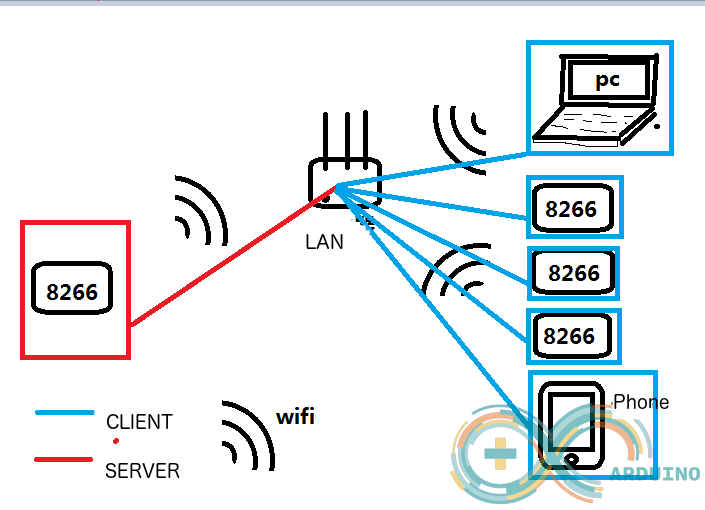15. Networking and Communications
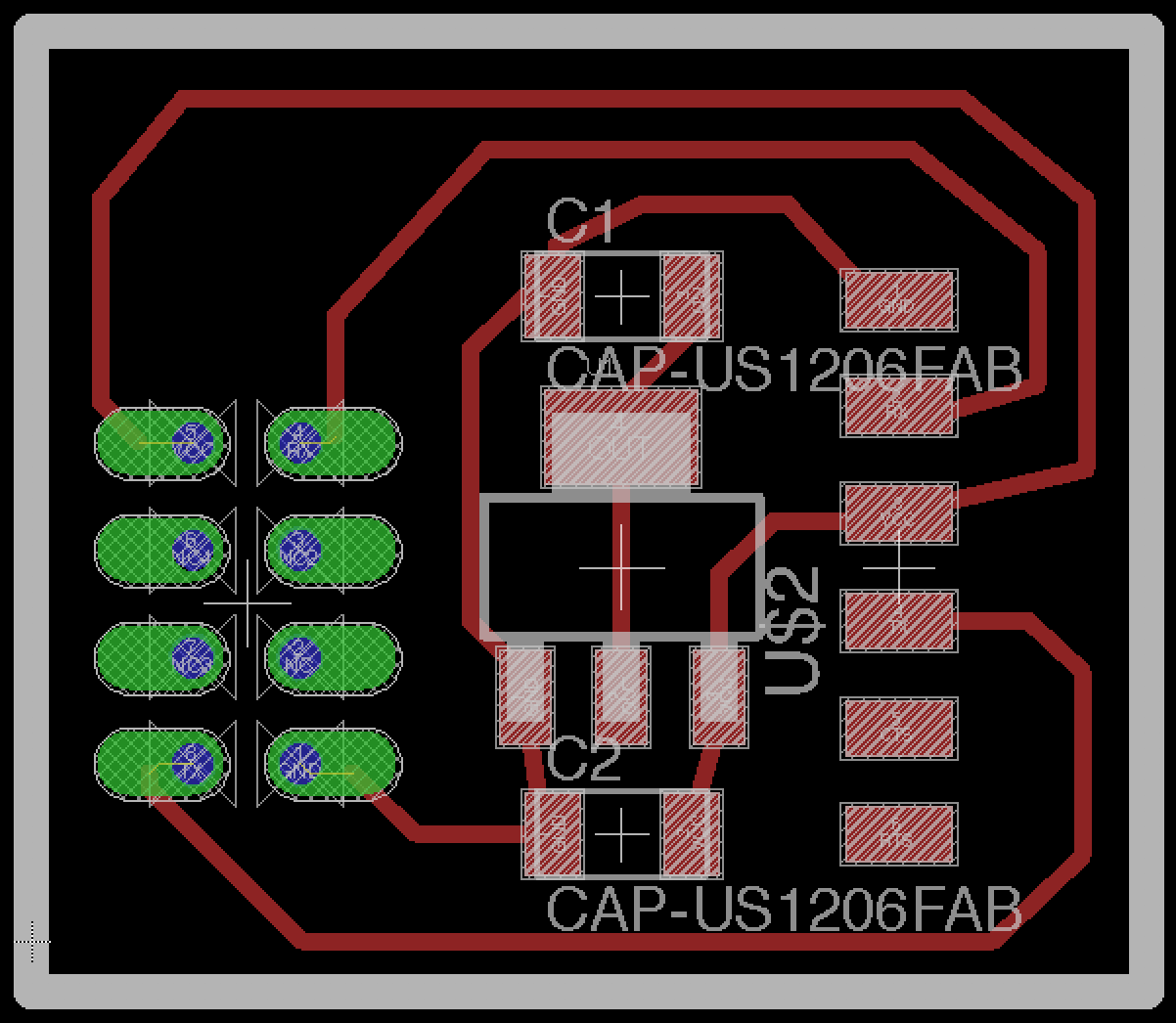
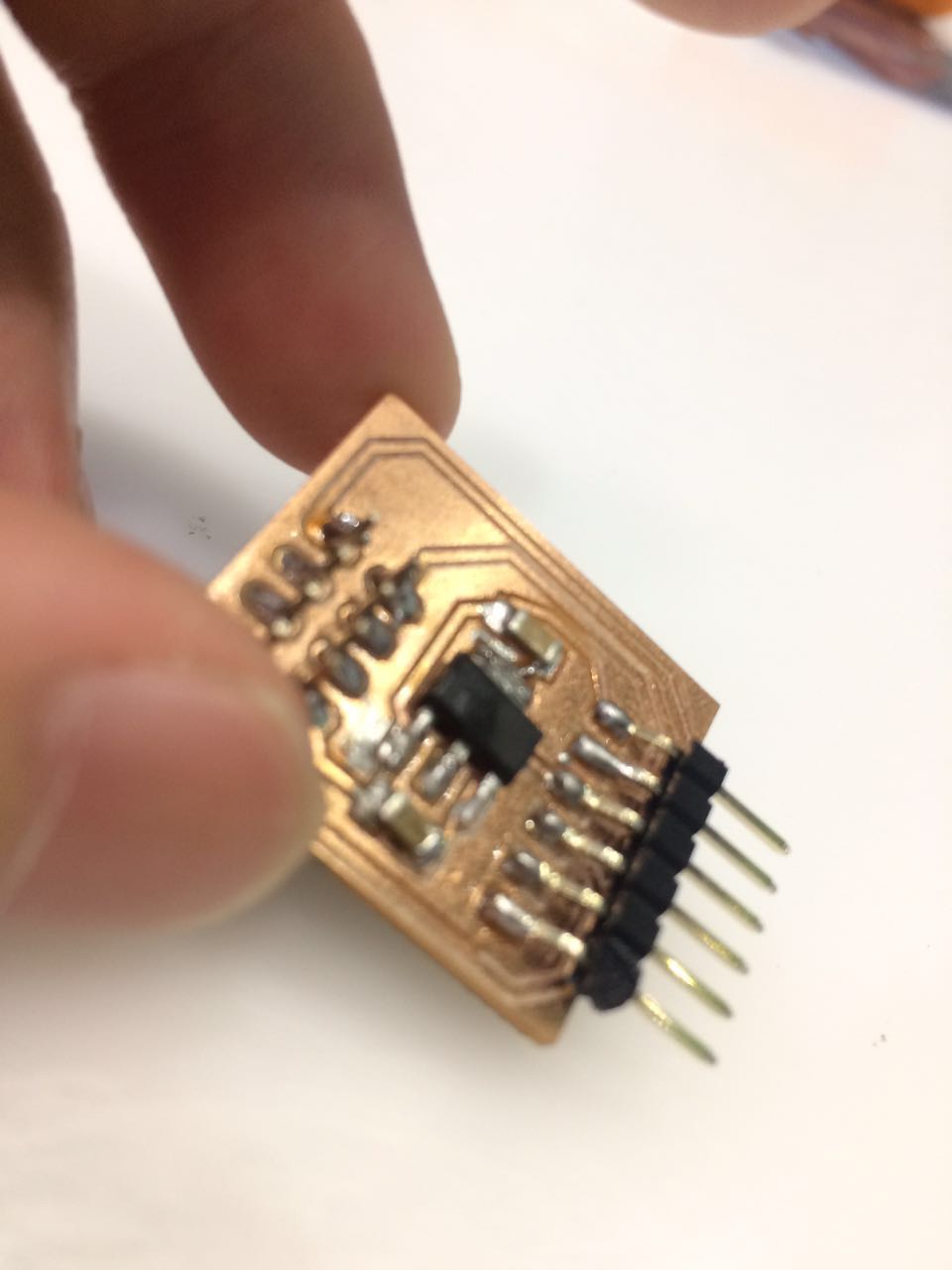
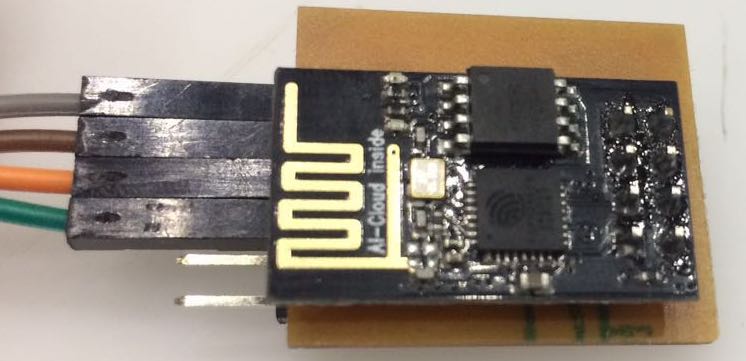
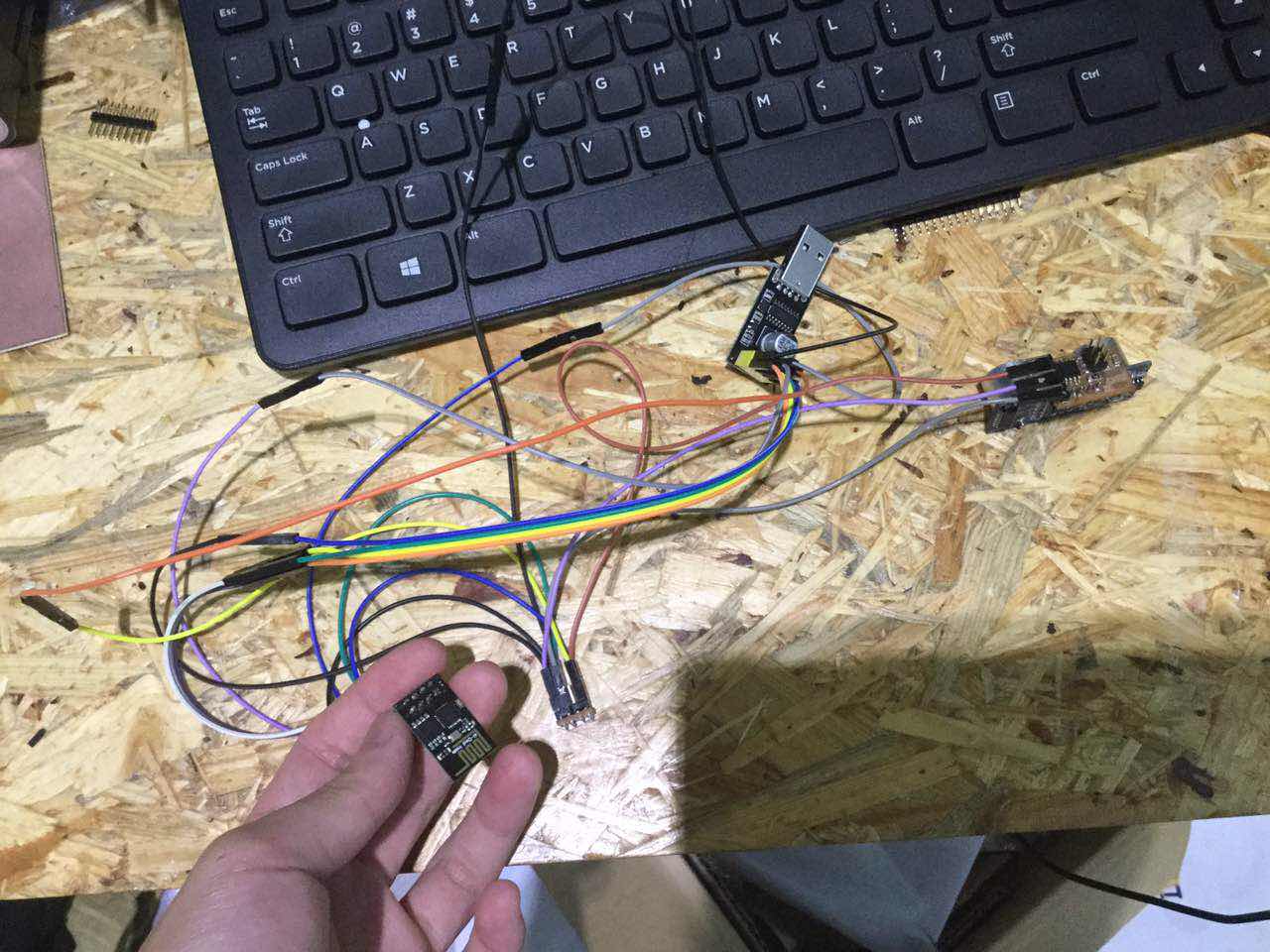
design the board with wifi 2.4g
I used the Eagle to design my board - since there are some ESP-01 in my Lab, I designed a board for it.
The ESP-01 also used the chip, ESP8266EX.
Here you see is the design of my board:

Since the board can only be used in one side - I want to solid the wifi board in the back of my board
here is the ESP-01:

Get the original Eagle design files.
cut the board out and solid the components
As usual, used Fabmodules to calculate the traces and outline
I used the outline to calculate the holes and used the 1/32 inches tools to cut it out - it is really appropriate to use it.
I export 3 png files - since I don't know whether the machine would cut the outline first and the hole then - so I cut the holes before the outline.
Here is what I got:
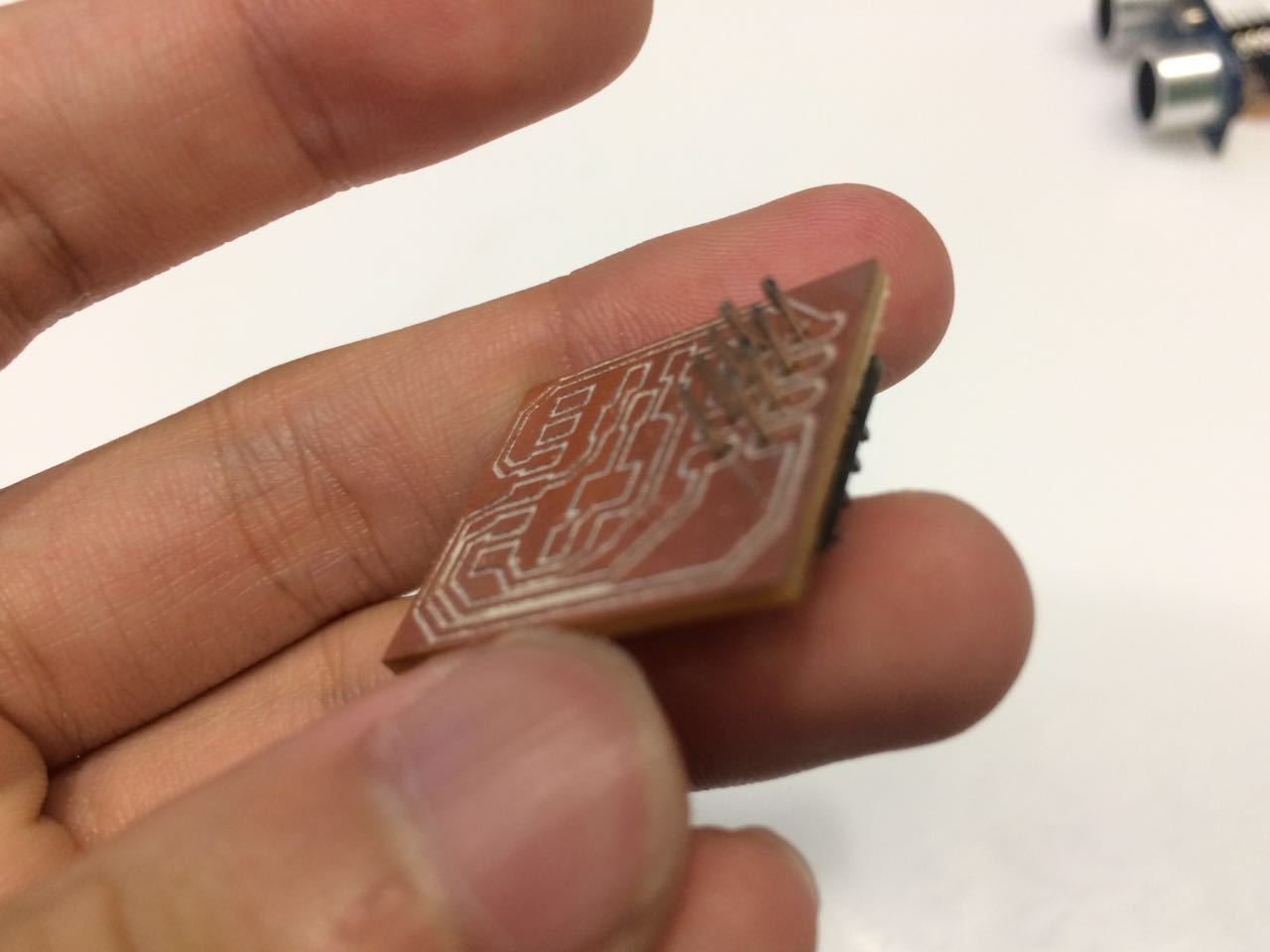
Then solid the components to the board:

test the board
I used the code in the terminal:
miniterm.py /dev/tty.usbserial-A50285BI 9600
AT
But I got no response then I search it in google and found that the ESP-L01 need to burn the program, so I got the program files on git hub and burn it to my board.
Then, I found there was actually something wrong with my esp 01, so I just bought another one and use it connect to the arduino and work:
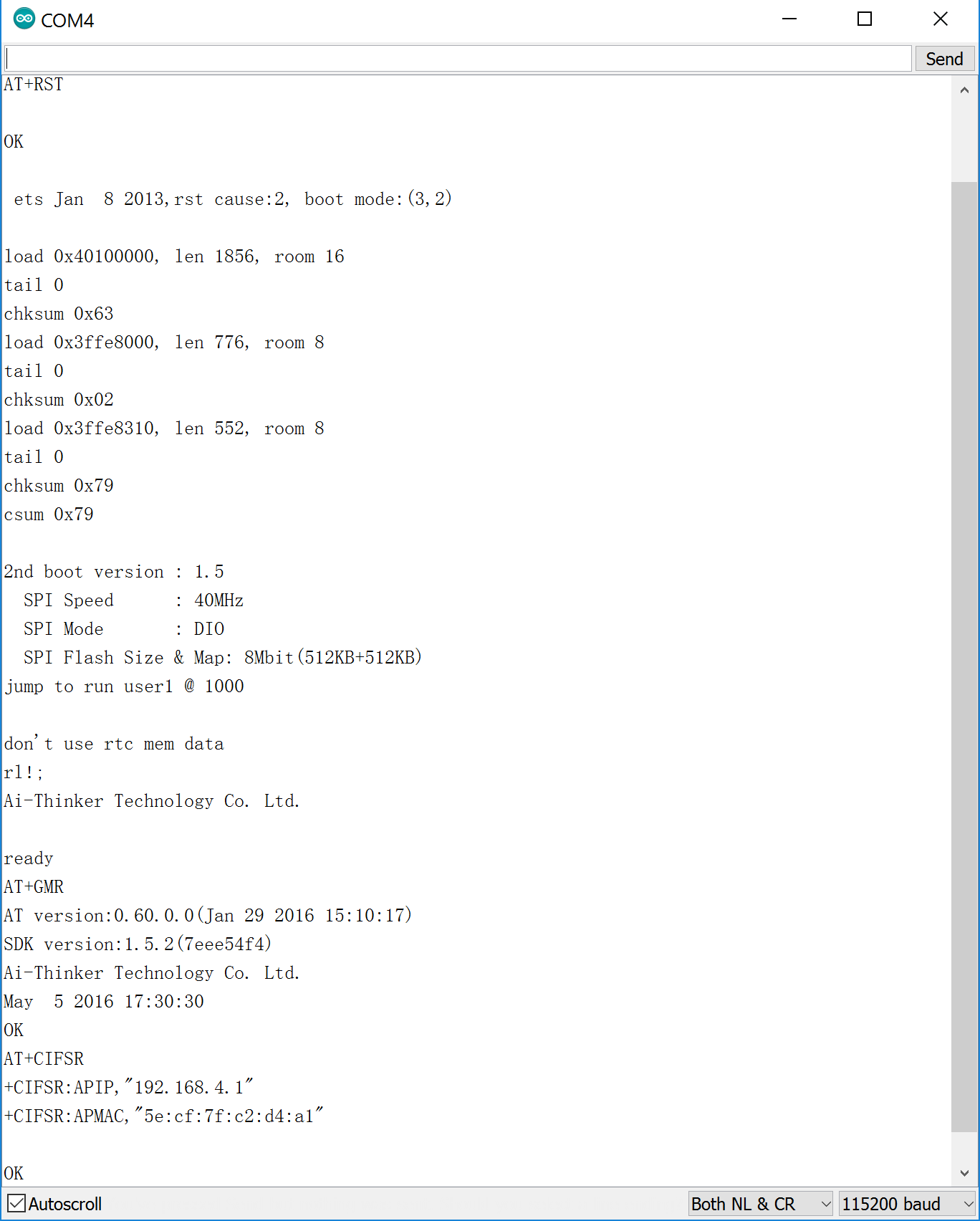
use the board
Then I want to connect my input board - the distance board to the wifi board so that I can get the serial data by using the phone connecting to the wifi. - that is what I thought
Then, I searched the internet for the information to do that, and I got 2 ways:
1. use the esp8266-01s as a TCP client and then connect it to the servers - I searched quiet a lot tutorials about this method. It said that there need to configure the server that can provide a data reservior for the data transported by the esp8266, and then configure the server that can provide the data visited from the client like the phone/ pc. Since I found it is going to be really hard and I don't need to visit my data while the devices are not with me, I chose not to use this method and tried another one: 2. use the esp8266-01s as a TCP server and connect it to the LAN - so that I can use other devices like my phones/ pc to connect to the esp8266-01s board with the distance data collector (the input devices week's homework) and it needs 2 esp8266-01s - one for the TCP servers, and one for the tranports of the data collected by the serial - like my distance board
So I used the second method - the tutorial said it needs to program the board A ( the server board) :
#include <ESP8266WiFi.h>
#define MAX_SRV_CLIENTS 3 //max connect clients,8266tcpserver can only support 5 clients connection
const char *ssid = "bao"; ////wifi ssid
const char *password = "123456780w"; //wifi key
WiFiServer server(8266);//random,range:0-65535
WiFiClient serverClients[MAX_SRV_CLIENTS];
void setup()
{
Serial.begin(115200);
delay(10);
pinMode(16, OUTPUT);
digitalWrite(16, 0);
WiFi.begin(ssid, password);
while (WiFi.status() != WL_CONNECTED)
{
delay(500);
}
server.begin();
server.setNoDelay(true);
}
void loop()
{
blink();
uint8_t i;
if (server.hasClient())
{
for (i = 0; i < MAX_SRV_CLIENTS; i++)
{
if (!serverClients[i] || !serverClients[i].connected())
{
if (serverClients[i]) serverClients[i].stop();//not connected - release
serverClients[i] = server.available();//new
continue;
}
}
WiFiClient serverClient = server.available();
serverClient.stop();
}
for (i = 0; i < MAX_SRV_CLIENTS; i++)
{
if (serverClients[i] && serverClients[i].connected())
{
digitalWrite(16, 0);//lights up when the link exists
if (serverClients[i].available())
{
while (serverClients[i].available())
Serial.write(serverClients[i].read());
}
}
}
if (Serial.available())
{
size_t len = Serial.available();
uint8_t sbuf[len];
Serial.readBytes(sbuf, len);
//push UART data to all connected telnet clients
for (i = 0; i < MAX_SRV_CLIENTS; i++)
{
if (serverClients[i] && serverClients[i].connected())
{
serverClients[i].write(sbuf, len); //transport all data to the clients
delay(1);
}
}
}
}
void blink()
{
static long previousMillis = 0;
static int currstate = 0;
if (millis() - previousMillis > 200) //200ms
{
previousMillis = millis();
currstate = 1 - currstate;
digitalWrite(16, currstate);
}
}
And the code for the board B - collector of the serial data and tranporter:
/*use 8266 as TCPcleint,add to the phone-created tcpServer*/
#include <ESP8266WiFi.h>
#define relay1 2
const char *ssid = "KMYZ8HL";//wifi ssid
const char *password = "kmyz6051180";//wifi keuy
const char *host = "192.168.191.4";//tcpServer IP - the ip of your phone in the LAN
WiFiClient client;
const int tcpPort = 8266;//port number
void setup()
{
Serial.begin(115200);
delay(10);
Serial.println();
Serial.println();
Serial.print("Connecting to ");//printf
Serial.println(ssid);
WiFi.begin(ssid, password);
while (WiFi.status() != WL_CONNECTED)//WiFi.status() ,
{
delay(500);
Serial.print(".");
}//if not connected, digital write..... to the serial ports
Serial.println("");
Serial.println("WiFi connected");
Serial.println("IP address: ");
Serial.println(WiFi.localIP());
}
void loop()
{
while (!client.connected())
{
if (!client.connect(host, tcpPort))
{
Serial.println("connection....");
//client.stop();
delay(500);
}
}
while (client.available())
{
uint8_t c = client.read();
Serial.write(c);
}
if (Serial.available())
{
size_t counti = Serial.available();
uint8_t sbuf[counti];
Serial.readBytes(sbuf, counti);
client.write(sbuf, counti);
}
}
By the way, it might not be easy to program the board like programming the board you programed before:
Here is the pin of the esp8266-01s:

work mode:
VCC----3.3
GND--GND
CH_PD--3.3
RX--TX
TX--RX
——————————————————————————————————
program the board:
VCC----3.3v
GND--GND
CH_PD--3.3v
GPIO0--GND
RX--TX
TX--RX
so I made a board for programming my esp8266-01s:
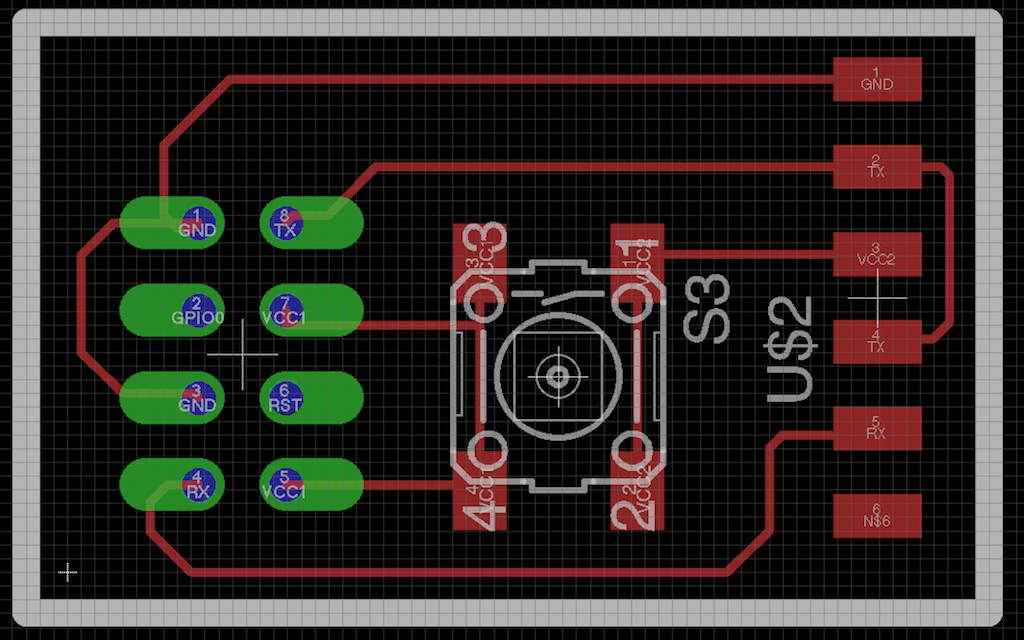
But then, my local instructor told me that it didn't need to be so complicated:
It just need to modified the distance files and use the esp8266 as a TCP server, and then it can just upload the data to the cloud.
so, I modified the programming file:
#include <SoftwareSerial.h>
SoftwareSerial mySerial (0,2);
int trig = 3;
int echo = 4;
long duration, distance ;
void setup() {
mySerial.begin(115200);
pinMode(trig, OUTPUT);
pinMode(echo, INPUT);
}
void loop() {
digitalWrite(trig, LOW);
delayMicroseconds(2);
digitalWrite(trig, HIGH);
delayMicroseconds(10);
digitalWrite(trig, LOW);
duration = pulseIn(echo,HIGH);
distance = duration / 58;
mySerial.println("AT+CIPSTART=\"TCP\",\"192.168.99.25\",8080");
mySerial.println("AT+CIPSEND=10");
mySerial.println(distance);
delay(100);
}
Then connect it to the esp8266 --> RX to the TX
But I found there might be something wrong with my input devices - the distance device that worked a week ago just didn't work. I found that I just can't receive the RX data from the distance board.
After that, I use the commend :
AT+CIOBAUD = 9600
To change rate to the 9600.
In this way, the esp8266 can receive the data from the input devices by using 9600 port rate.
But I still can't get the distance number from my input devices:

file / arduino
this file is the same as the code showed above.

